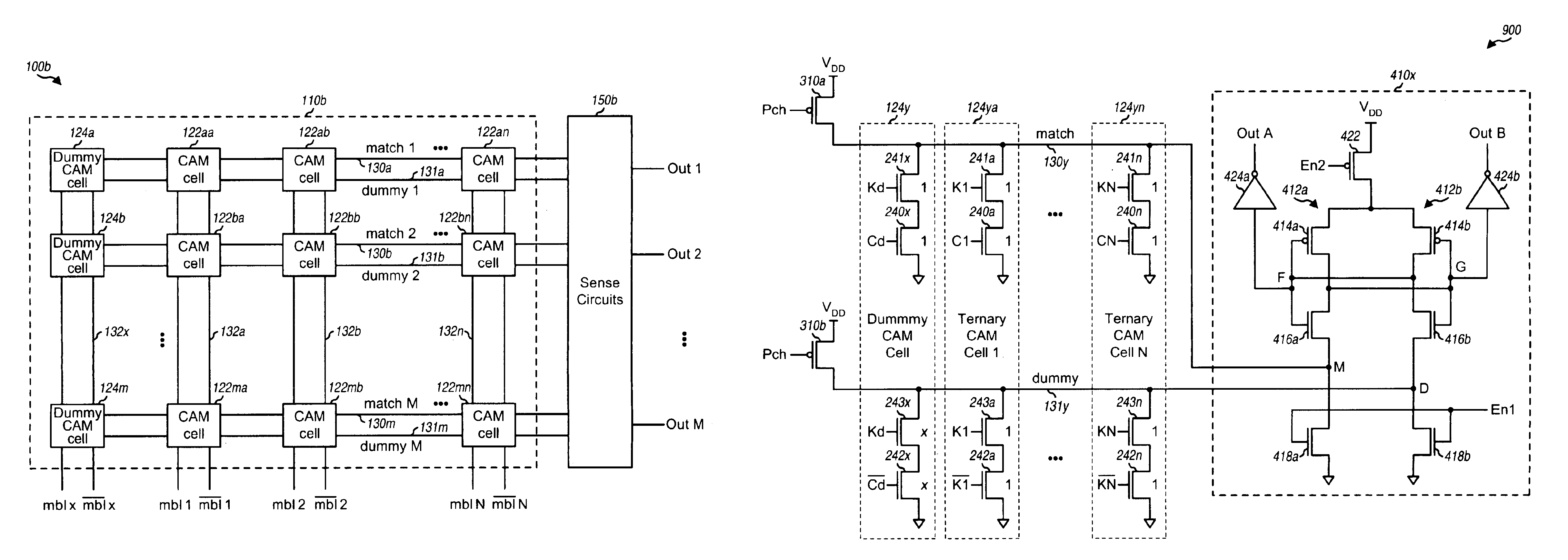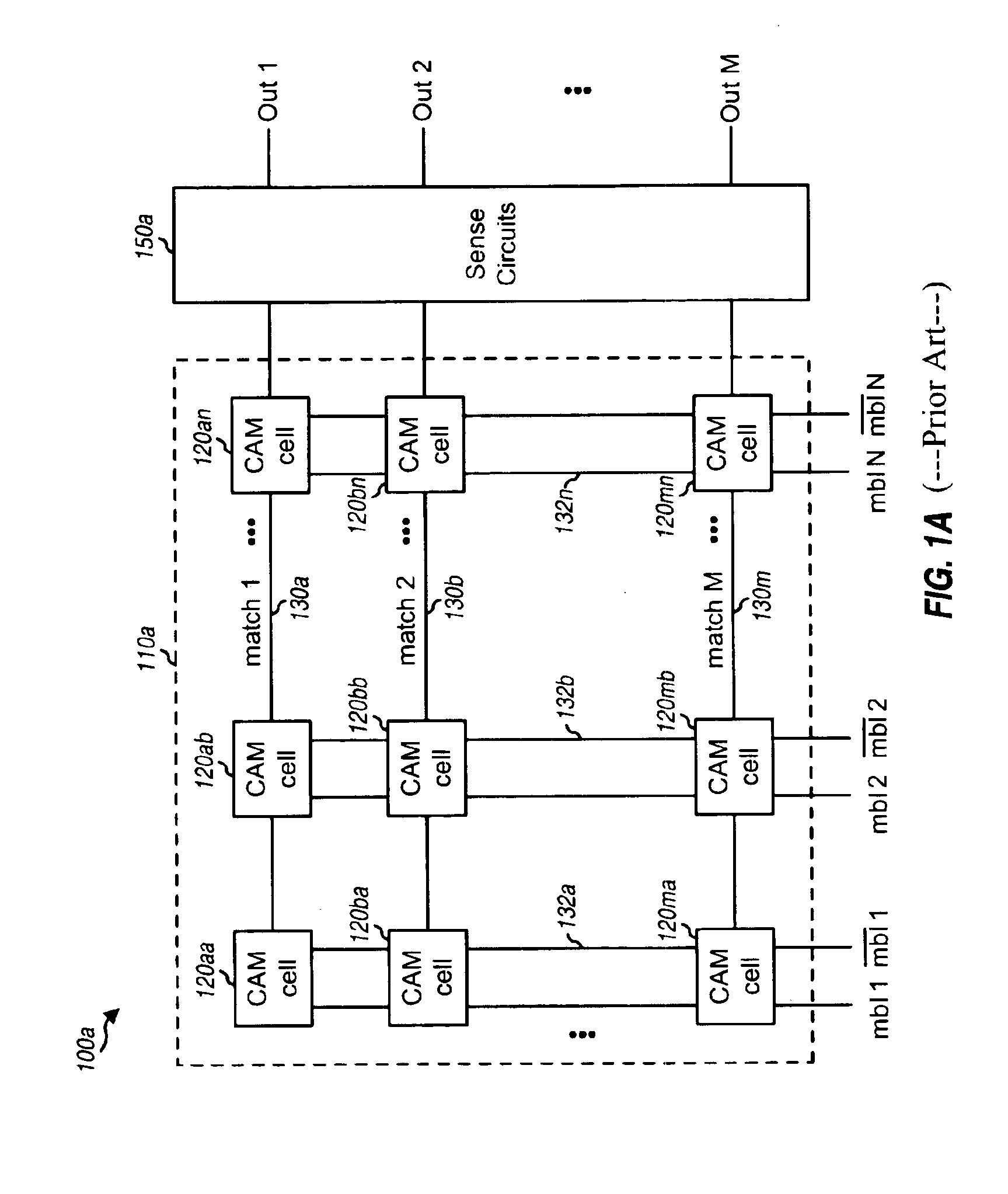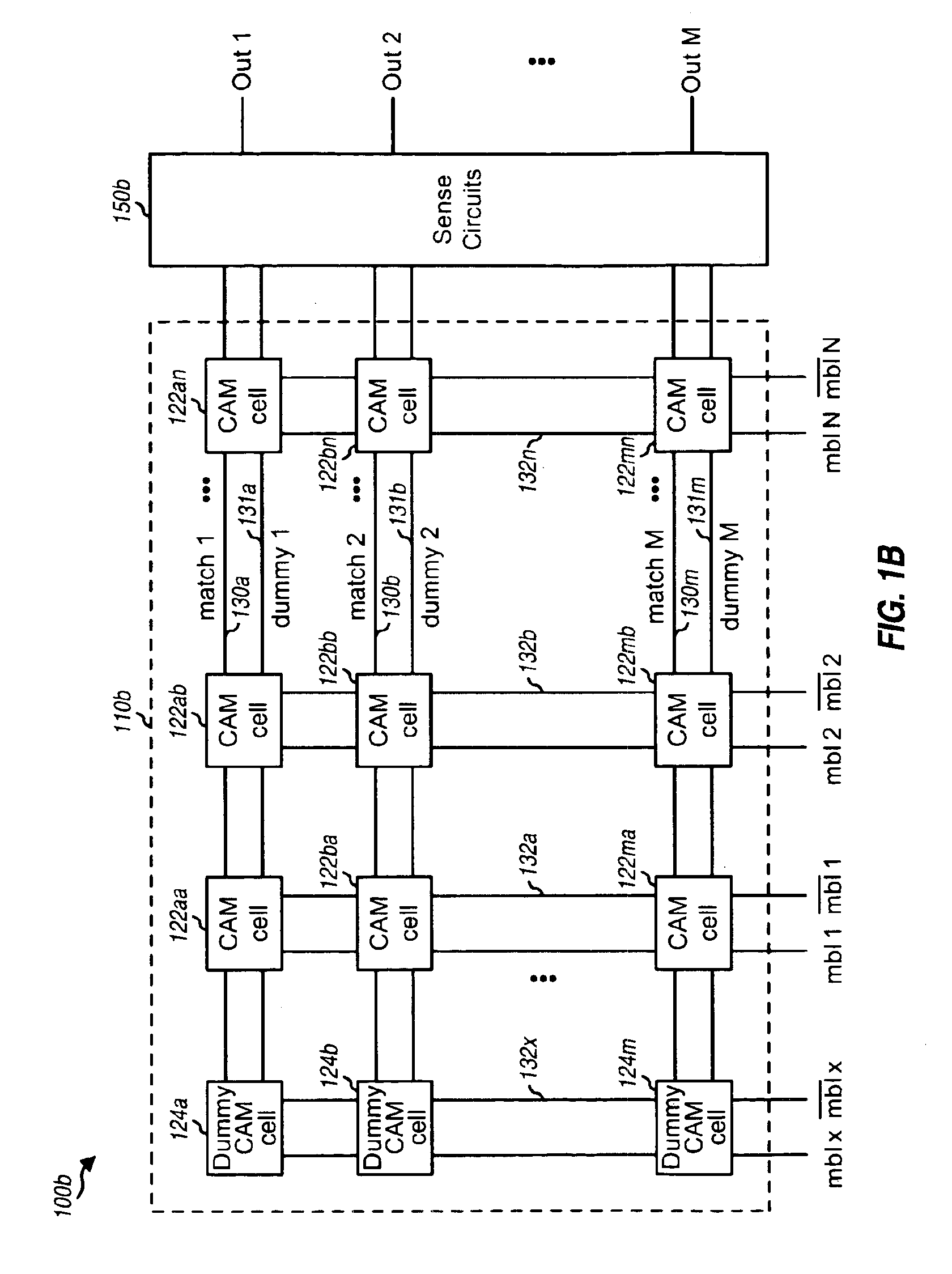CAM cells and differential sense circuits for content addressable memory (CAM)
a technology of differential sense and content addressable memory, applied in the field of semiconductor circuits, can solve the problems of excessive power consumption of cam design, speed limitation of wired-or-match line design, etc., and achieve the effects of improving performance, reducing power consumption, and speeding up the speed of operation
- Summary
- Abstract
- Description
- Claims
- Application Information
AI Technical Summary
Benefits of technology
Problems solved by technology
Method used
Image
Examples
Embodiment Construction
[0029]FIG. 1A is a block diagram of a conventional content addressable memory (CAM) unit 100a. CAM unit 100a includes a CAM array 110a coupled to sense circuits 150a. CAM array 110a is a two-dimensional array of M rows by N columns of CAM cells 120. Each row of the CAM array includes N cells that collectively store data for an entry in the array. Each row is further associated with a respective match line 130 that couples to all CAM cells in the row and further couples to sense circuits 150a.
[0030]Each of the N columns of the CAM array is associated with a specific bit position of an N-bit input address. A differential address line 132 is provided for each address bit and couples to all cells in the corresponding column of the CAM array. In this way, each bit of the N-bit input address may be compared with each of the M bits stored in the M cells in the corresponding column. The N-bit input address may thus be provided to all M rows of the CAM array and simultaneously compared agai...
PUM
 Login to View More
Login to View More Abstract
Description
Claims
Application Information
 Login to View More
Login to View More - R&D
- Intellectual Property
- Life Sciences
- Materials
- Tech Scout
- Unparalleled Data Quality
- Higher Quality Content
- 60% Fewer Hallucinations
Browse by: Latest US Patents, China's latest patents, Technical Efficacy Thesaurus, Application Domain, Technology Topic, Popular Technical Reports.
© 2025 PatSnap. All rights reserved.Legal|Privacy policy|Modern Slavery Act Transparency Statement|Sitemap|About US| Contact US: help@patsnap.com



